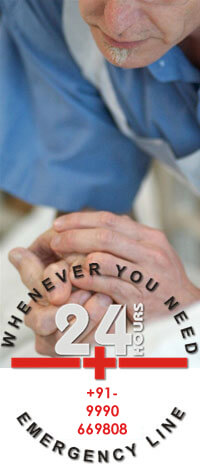Infant CPR - COMPRESSIONS
An infant's delicate ribcage is especially susceptible to damage if chest compressions are improperly performed, therefore it is important to use caution when rescuing an infant.
Place three fingers in the center of the infant's chest with the top finger on an imaginary line between the infant's nipples. Raise the top finger up and compress with the bottom two fingers (Figure 1). The compression should be approximately ⅓ to ½ the depth of the infant's chest.
Count aloud as you perform 5 cycles of 30 compressions and 2 breaths before checking the infant for breathing and pulse.
REMEMBER TO DIAL 1-1-2.
If there is no pulse, continue administering 30 compressions/2 breaths until an ambulance arrives. If at any point the infant regains a pulse but still does not breathe on his own, give him one rescue breath every three seconds.


































